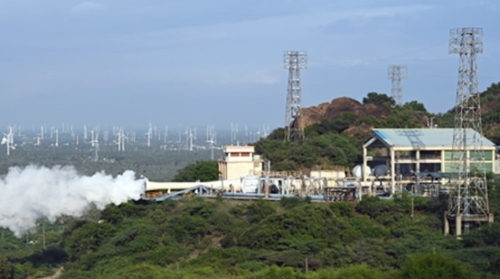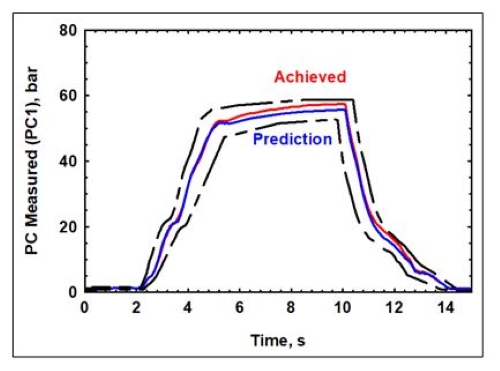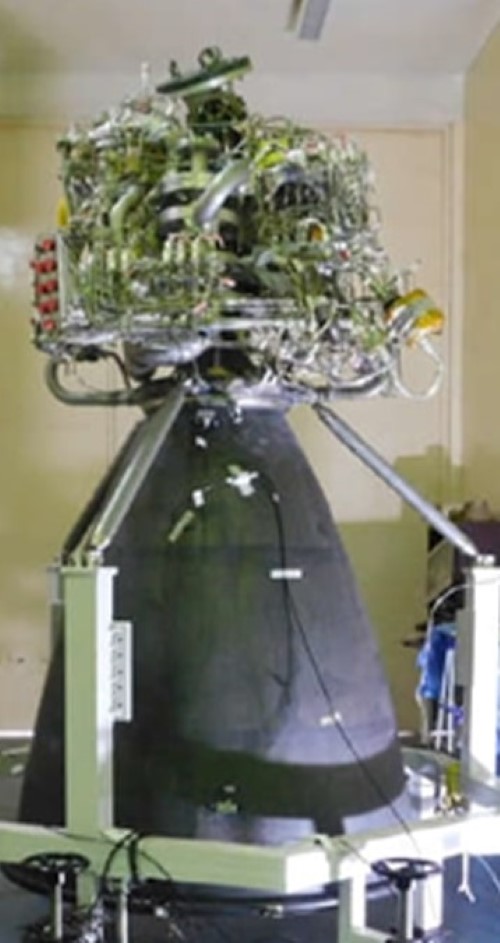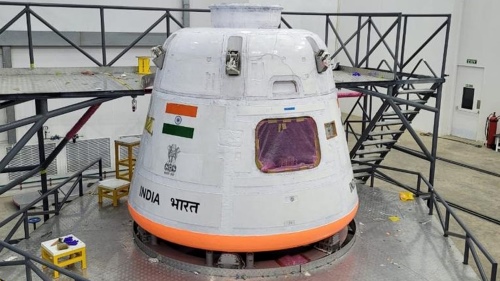On February 7, 2025, the Indian Space Research Organisation (ISRO) successfully conducted an ignition trial of the CE-20 cryogenic engine. This engine powers the upper stage of the Launch Vehicle Mark-3 (LVM3). The test was conducted at the High Altitude Test Facility in Mahendragiri, Tamil Nadu. These tests are crucial for India's space missions, particularly for the India’s first human spaceflight Gaganyaan human spaceflight program. The latest trials were conducted under vacuum conditions, simulating inflight scenarios, and at sea level to evaluate performance in different environments.
When and where the test was conducted?
The first Sea Level Hot test was conducted at ISRO Propulsion Complex, Mahendragiri on November 29,2024 and in recent on February 7,2025, Vacuum Ignition Trials were conducted at High Altitude Test Facility, Mahendragir, Tamil Nadu.
Vacuum Ignition Trial (February 7, 2025)
On February 7, 2025, ISRO conducted a successful ignition trial of the indigenous CE-20 cryogenic engine using a Multi-element Igniter under vacuum conditions. This trial aimed to simulate the engine ignition in space-like conditions. The primary objective of the CE-20 cryogenic engine ignition trial is to evaluate the engine's ignition under simulated space-like vacuum conditions. This will be achieved by utilizing a multi-element igniter and simulating tank pressure conditions that are anticipated during in-flight engine restart.

Source: NASA
Sea Level Hot Test (November 29, 2024)
Objective: To evaluate the multi-element igniter performance and restart capability at sea level. To address the challenge of flow separation in high-area ratio nozzles.
Challenges & Solutions:
| Challenges | Solutions Implemented |
| Flow separation in high-area ratio nozzle | Implemented a Nozzle Protection System to prevent severe vibrations and thermal damage. |
| High exit pressure of 50 mbar | Conducted tests at a High Altitude Test Facility (HAT) to validate performance. |
Outcome:
- The test was successful, demonstrating a new cost-effective, and less complex procedure for acceptance testing of CE20 engines.
- Engine and facility performed normally, achieving expected performance parameters.

Source: NASA
Let us now understand what is CE20 Cryogenic Engine and its role in upcoming space missions including the Gaganyaan Mission.
What Is the CE20 Cryogenic Engine?
The CE20 Cryogenic Engine is a powerful liquid-fuel rocket engine designed by the Indian Space Research Organisation (ISRO) to drive the upper stage of the Geosynchronous Satellite Launch Vehicle Mk III (GSLV Mk III) or LVM3. It is recognized as one of the most potent cryogenic engines in use today for upper-stage propulsion. The engine operates using liquid oxygen (LOX) and liquid hydrogen (LH2) as propellants and stands out for being fully developed in India by ISRO's Liquid Propulsion Systems Centre (LPSC).

Source: NASA
Significance of the CE-20 Engine
- Key Role in Gaganyaan Mission: Essential for India's first human spaceflight program.
- Vacuum Operation: Designed to function under space conditions.
- Thrust Range: Capable of generating 19 to 22 tonnes of thrust.
- Milestone Achievement: Strengthens India’s space exploration capabilities.
Role of CE-20 Engine in Gaganyaan Mission
Let us first understand what is Gaganyaan Mission in brief. This is India’s first human spaceflight Gaganyaan human spaceflight program led by ISRO in which the mission aims to send humans into space and bring them back safely. The Human Space Flight Centre (HSFC) is responsible for coordinating the program, ensuring human safety, and advancing R&D in key technological areas. In Gaganyaan Mission the human will have to reach the orbit in time about 16 minutes and make Re-entry duration in 36 hours.

Source: Space.com
How CE-20 Engine is important for the Gaganyaan Mission?
The CE-20 engine is crucial for the Gaganyaan mission, as it will power the LVM3 launch vehicle's upper stage, propelling astronauts into orbit. This LVM3 rocket, equipped with the CE-20 cryogenic engine, has been chosen as the launch vehicle for Gaganyaan. The cryogenic stage powered by CE-20 provides the necessary thrust to place the Orbital Module into the required Earth orbit (~400 km altitude). The CE-20 engine's enhanced thrust capabilities, indigenous development, and thorough human-rating certification make it a pivotal component in the success of the Gaganyaan mission, ensuring the safe and efficient transport of astronauts into space. Here is given in detail how this engine generates the required thrust to propel the crew module into its intended orbit.
- Thrust Capabilities: The CE-20 engine has been qualified to operate at thrust levels of 19 tonnes and has successfully powered six LVM3 missions to date. For the Gaganyaan mission, it has been upgraded to produce a thrust level of 20 tonnes. Additionally, it has been configured for an enhanced thrust of 22 tonnes for future missions, thereby improving the payload capability of the LVM3 launch vehicle.
- Indigenous Development: Developed by ISRO's Liquid Propulsion Systems Centre (LPSC), the CE-20 engine showcases India's advancements in cryogenic technology. Its successful deployment in previous missions underscores its reliability and performance.
- Human-Rating Certification: The engine has undergone rigorous testing to meet the stringent safety and reliability standards required for human spaceflight. This includes successful ignition trials under vacuum conditions, simulating the space environment, and ensuring the engine's readiness for crewed missions
Challenges of Cryogenic Engine Restart
Restarting a cryogenic engine is inherently complex. To enhance restart capabilities, ISRO is testing turbopumps in bootstrap mode instead of the stored gas system.
Key Improvements:
- Bootstrap Mode: Enables re-ignition under tank head conditions.
- Multiple Restart Capability: Essential for extended missions like Gaganyaan.
- Series of Tests Planned: Aimed at verifying multiple restarts during flight.
Future Testing Plans
As per ISRO, CE-20 engine will play an important role in Upcoming Gaganyaan Mission and used for a series of tests to develop engine restart capability using bootstrap mode. These efforts aim to enhance inflight restart feasibility, which is crucial for long-duration space missions.
Conclusion
The successful vacuum ignition and sea-level hot tests of the CE20 cryogenic engine mark a significant step in India's space exploration. These developments are crucial for the Gaganyaan mission, enabling multiple restarts of the engine and enhancing mission flexibility. ISRO continues to refine engine restart mechanisms, paving the way for future deep-space missions.
Comments
All Comments (0)
Join the conversation